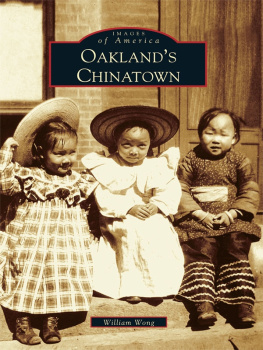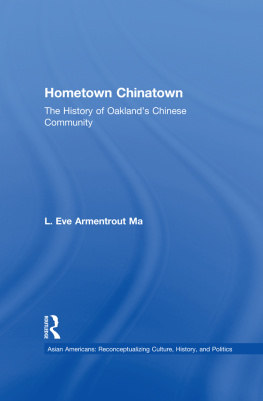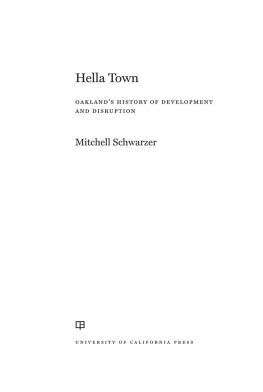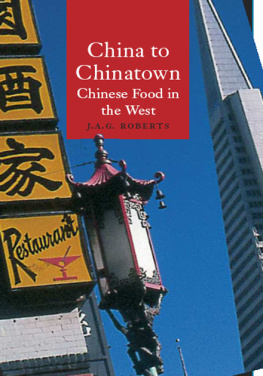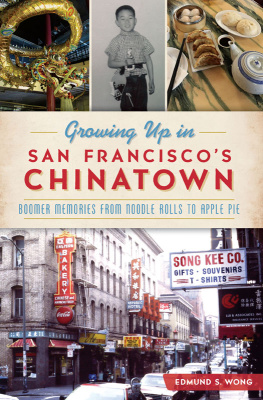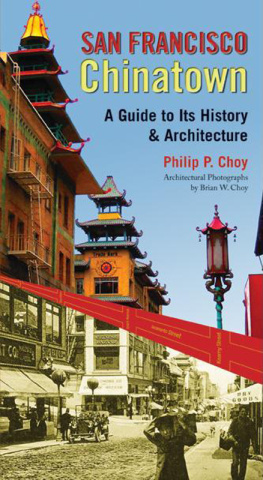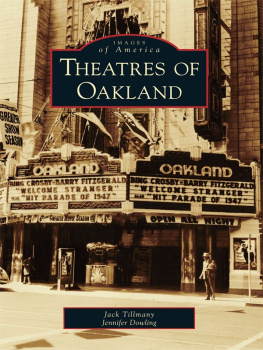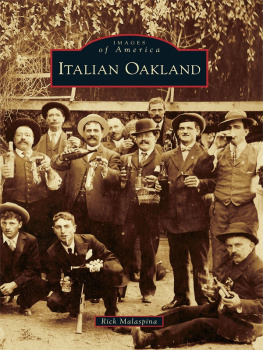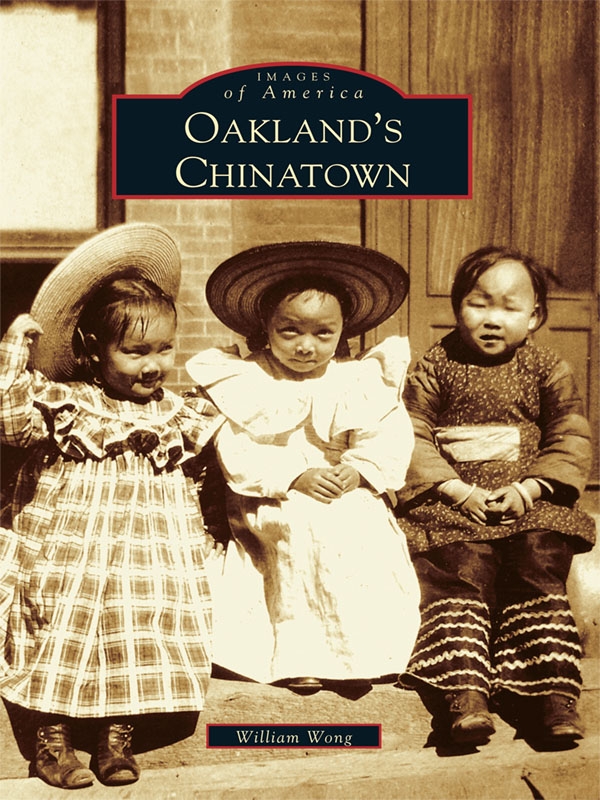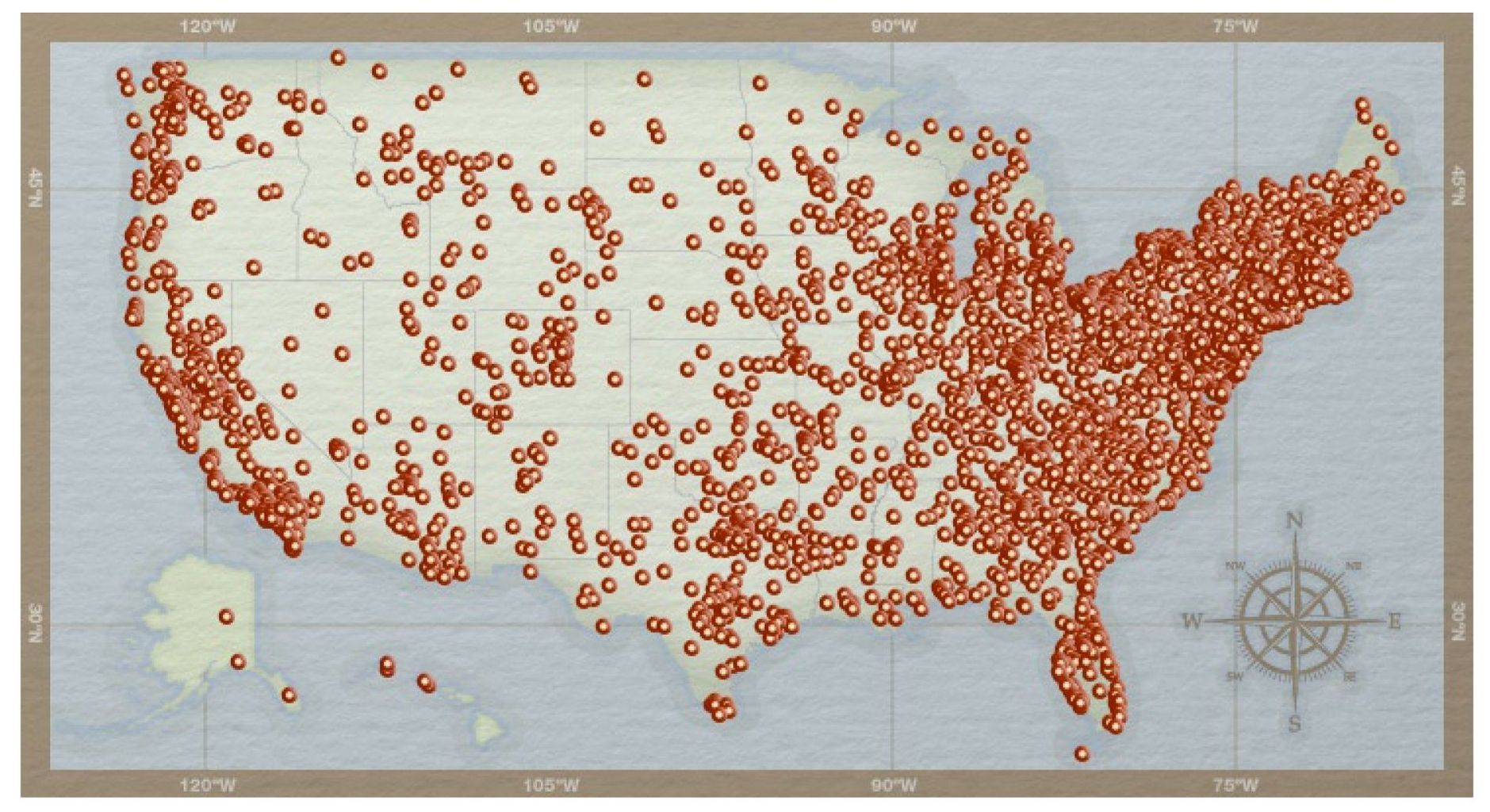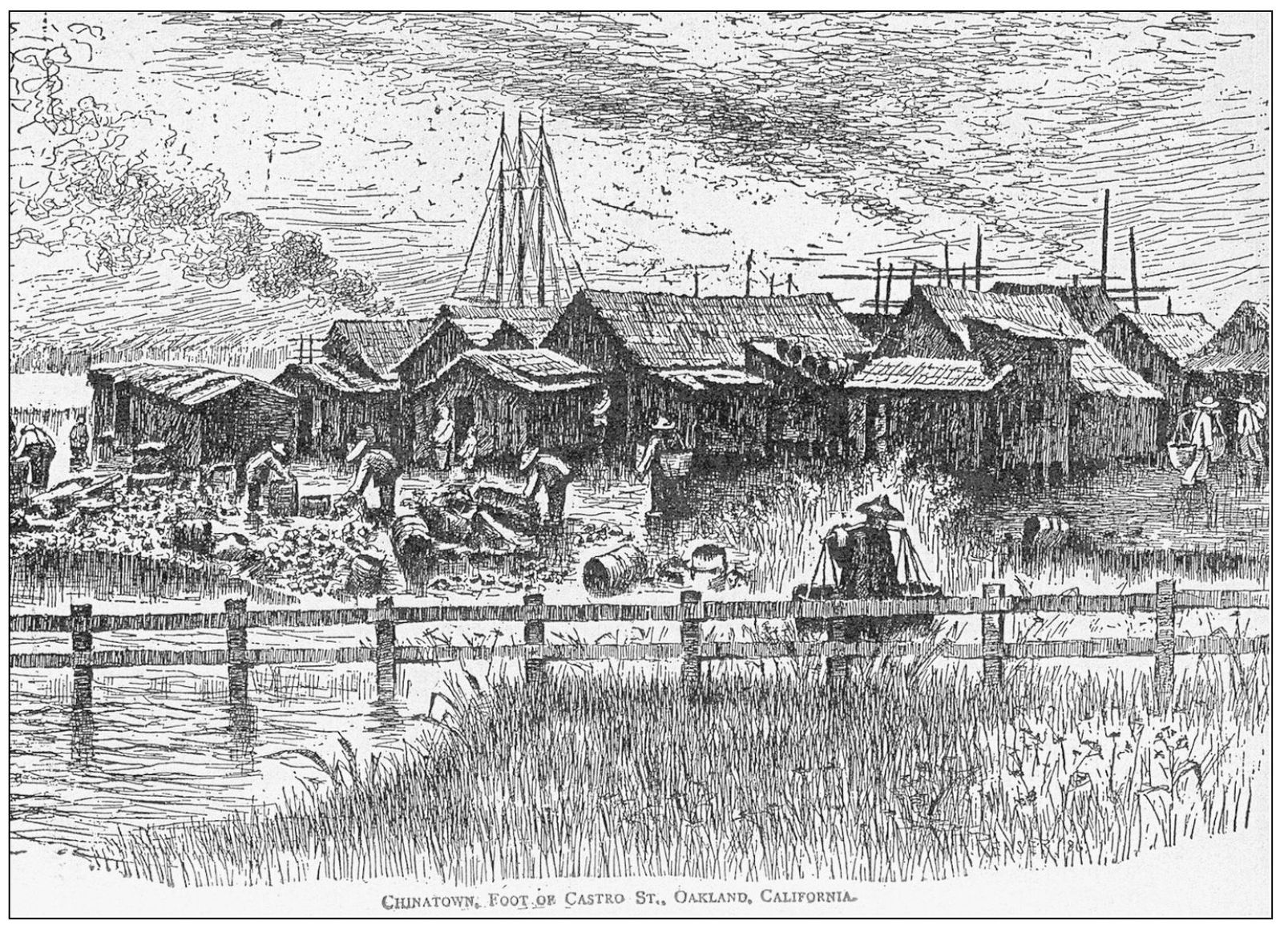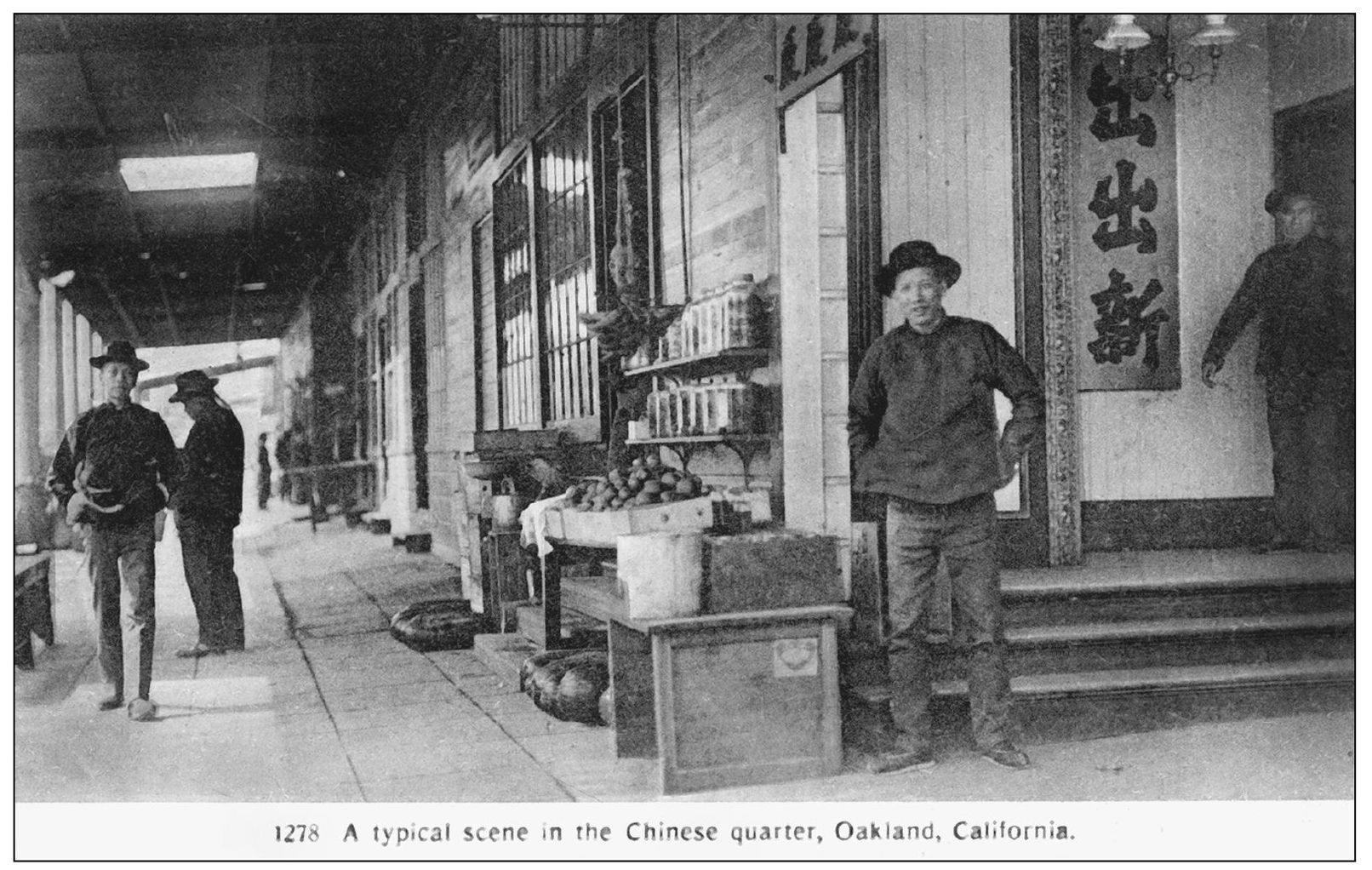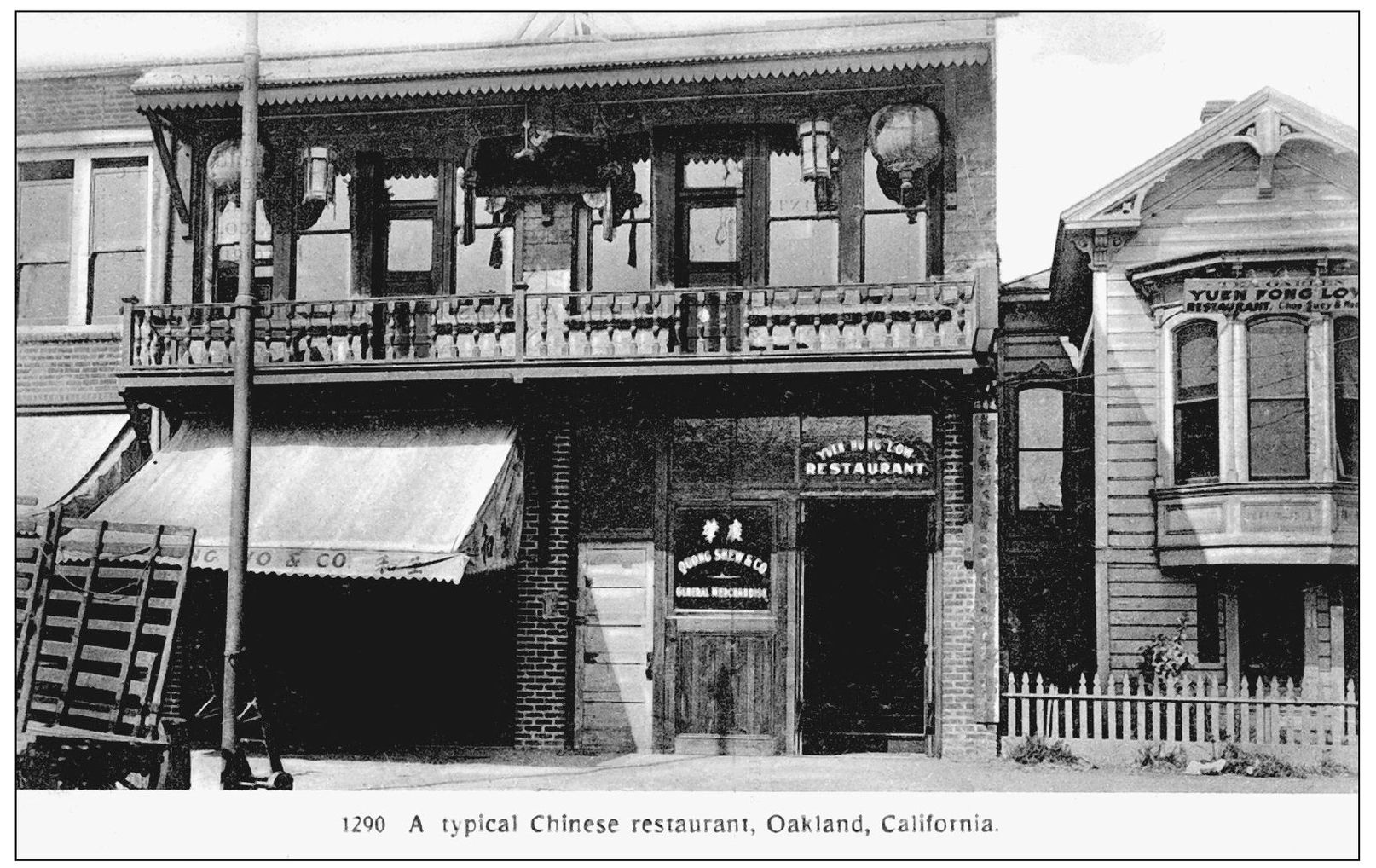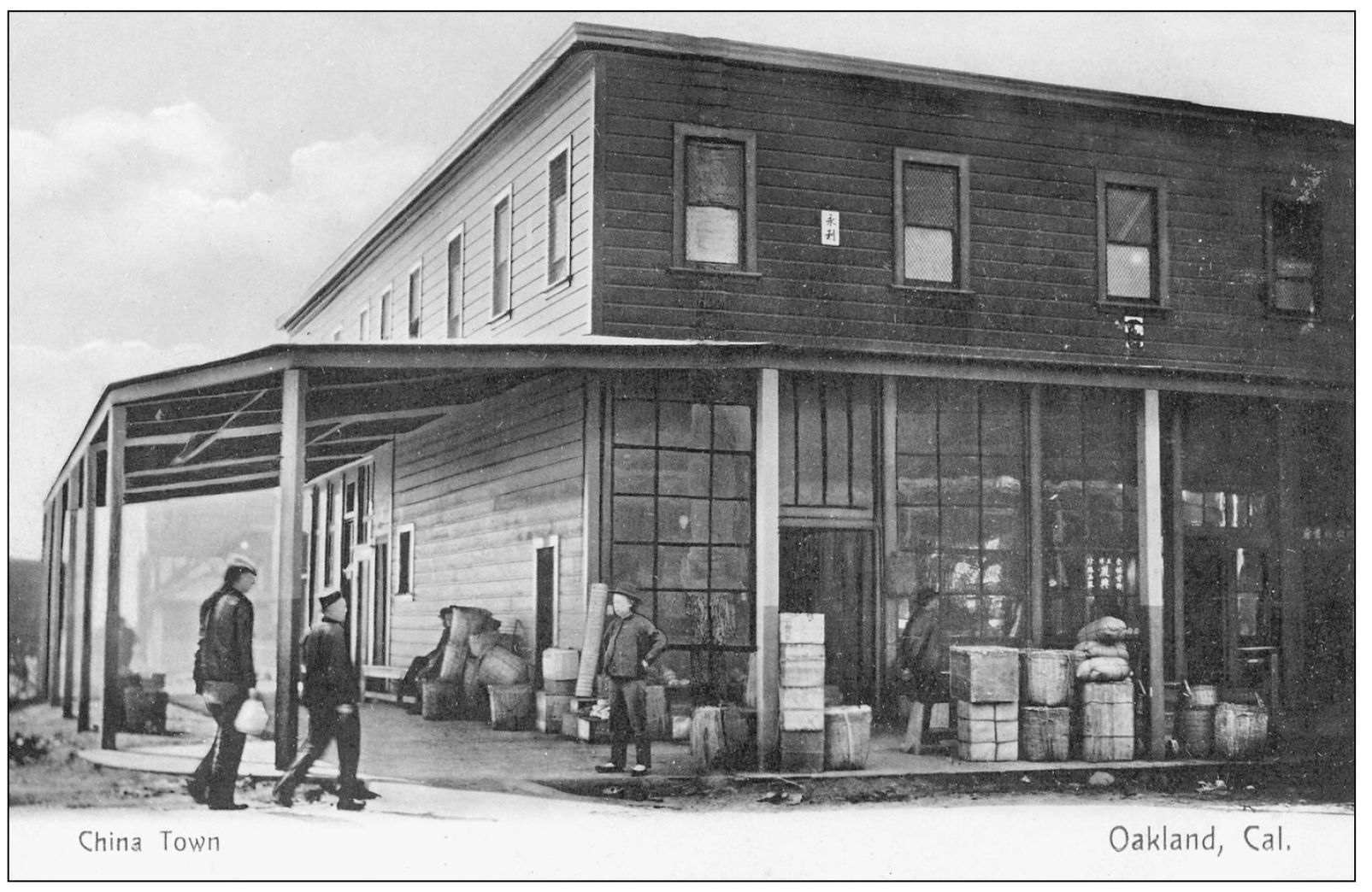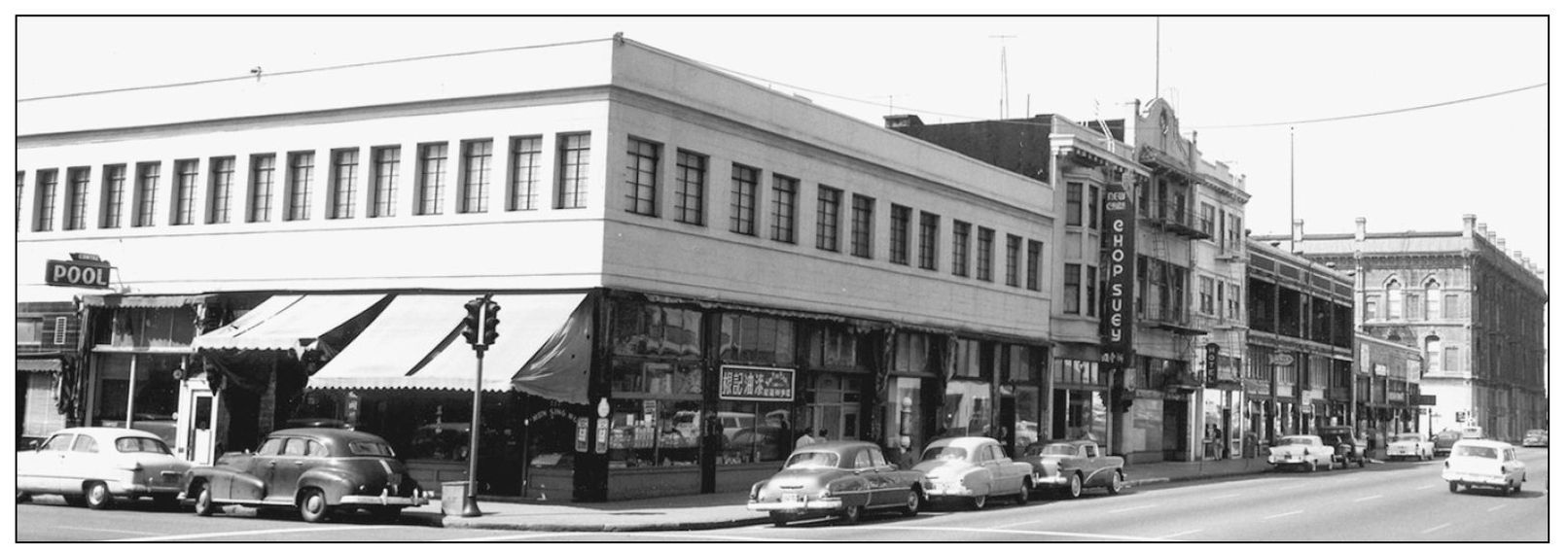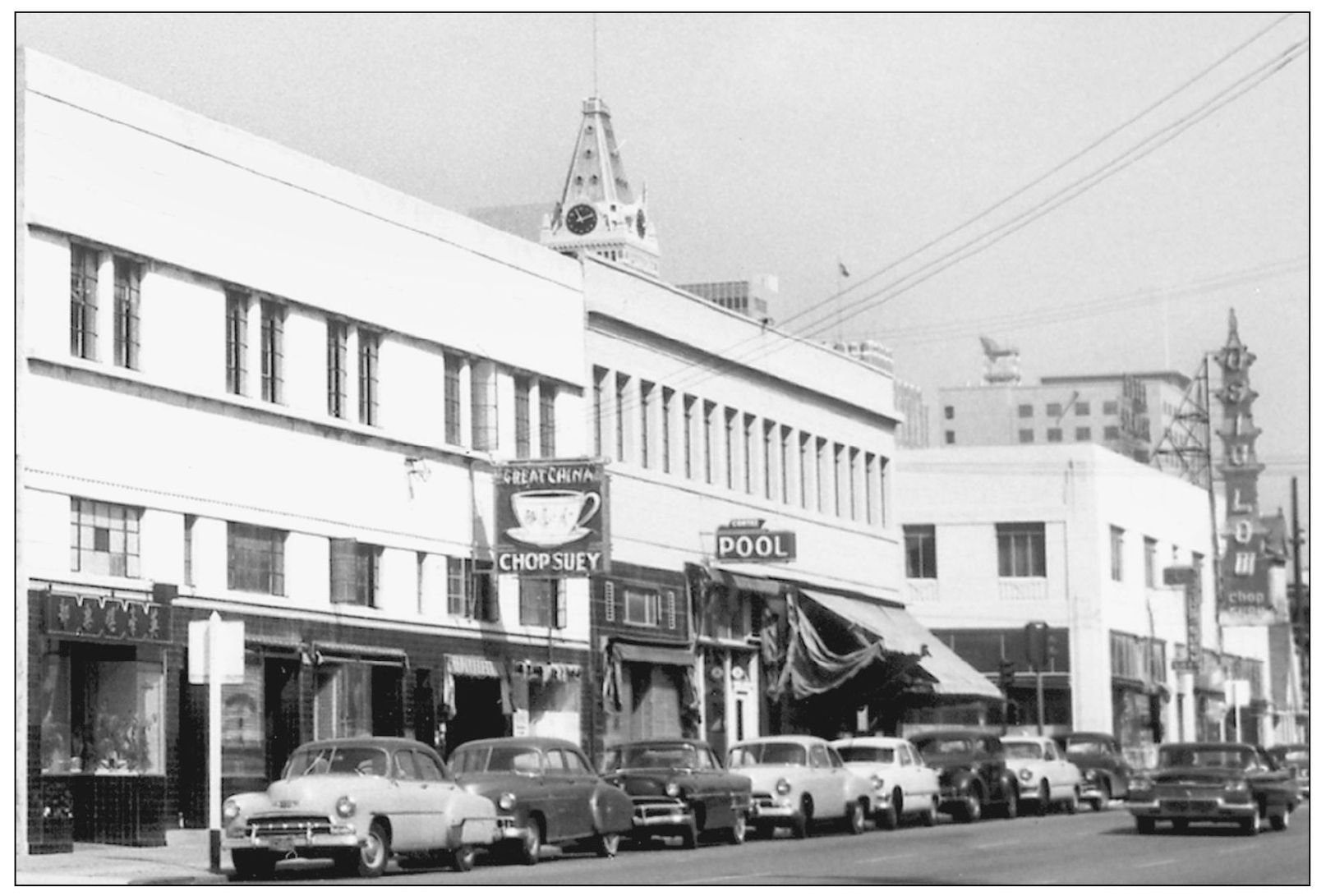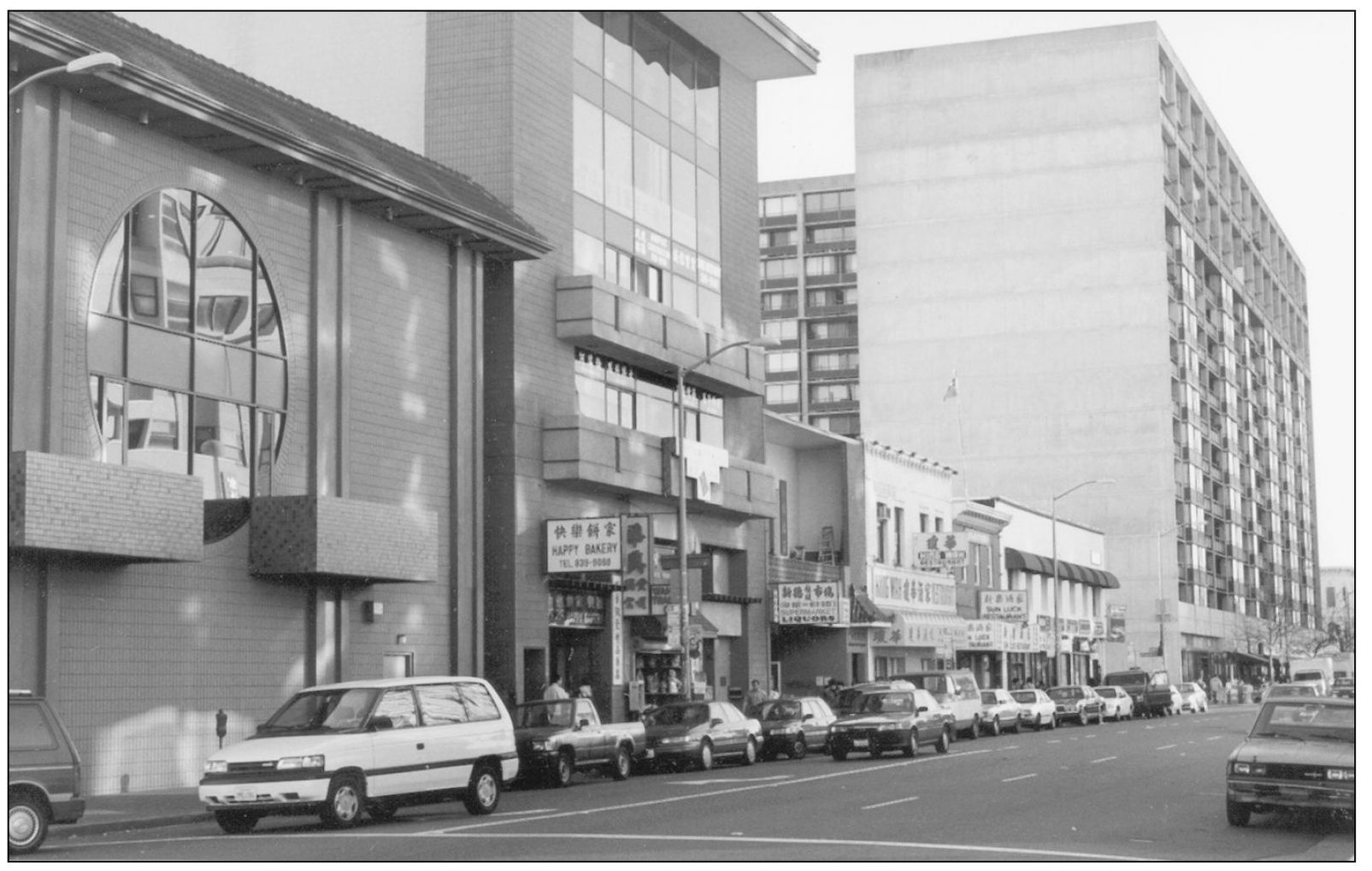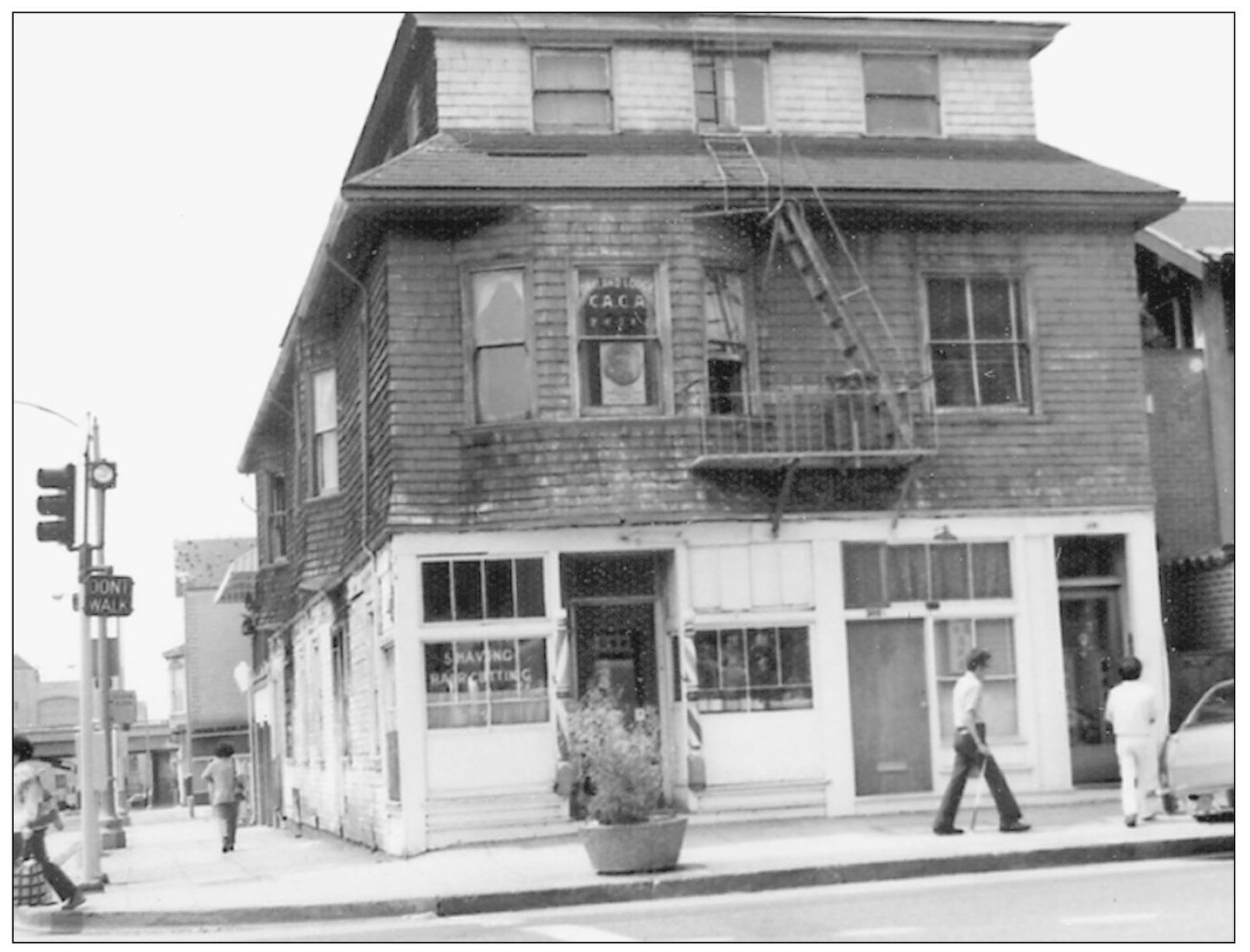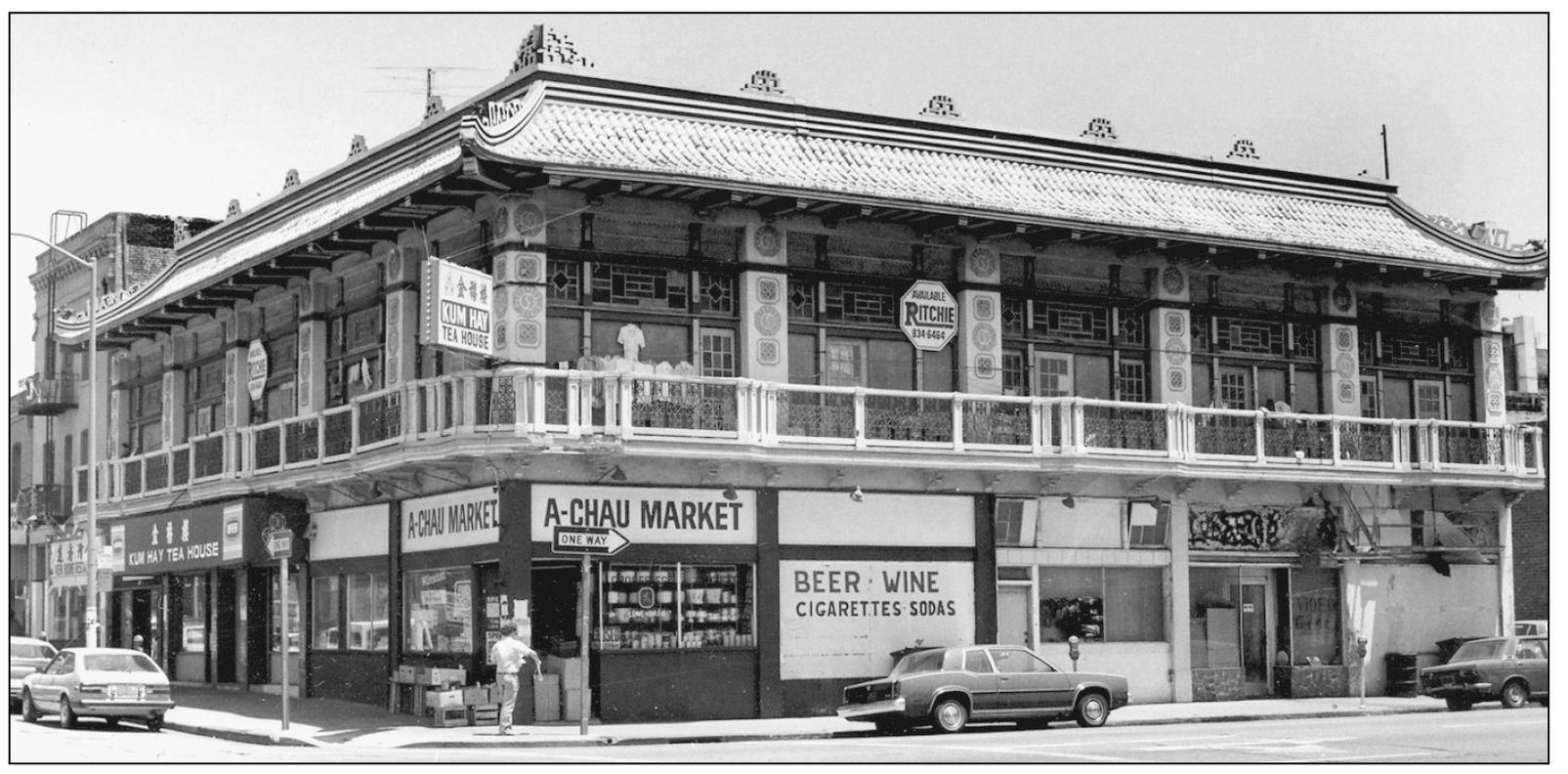ACKNOWLEDGMENTS
The following people and organizations have been incredibly generous with their help, advice, and counsel:
Asian American Studies Library, University of California at Berkeley (Wei Chi Poon); Evangeline Canonizado Buell, Carl Chan, Linda Yu Chan, Nicole Chan, Henry Chang, Ernest Chann, Serena Chen, Sherlyn Chew, Emily Chow, Ed Clausen, Harvey and Bea Dong, Jeanette Dong, Michael Endo, Tiffany Eng, Weylin Eng, Art Fong, Clifton Fong, George Fong, Wayne Fong, Corinne Jan, Audee Kochiyama-Holman, Rev. Peter Lau, Darlene Lee, George and Mary Lee, Homer Lee, Dr. Janet Lee, Janet Lem, Lee Mun Wah, Kathleen Leung, Sam Chu Lin, Julia Liou, Jean Moon Liu, Rev. Alvin Louie, Jeanie Low, Russell Lowe, Doris Lum, Mary Mar, Luella Mak, Sam Mende-Wong, Linda Montecillo, Oakland Cultural Heritage Survey (Betty Marvin), Oakland Museum of California (Dennis Power, Marcia Eymann, Diane Curry, Stacey Zwald), The Oakland Public Library (Steve Lavoie), George Ong, James Ong, Mel Orpilla, Eugene Quen, Annie Rowley, Rev. Dr. James Shum, Kathy Sloane, Annie Soo, Ed Sue, Wendi Sue, Art Tom, Christopher Tom, Don Tamaki, Rev. Dr. Fran Toy, Lai Chop Webster, Bob Wing, Laraine Wing, Andrew Wong, Betty Wong, Ed and Flo Oy Wong, June Yamane Wong, Kenneth Wong, Li Keng Wong, Nellie Wong, Henry and Henrietta Woon, Ann Yee, Gary and Caroline Yee, May Young, Edward Yu, Judy Yung, and a special word of thanks to the authors wife, Joyce, who was supportive in ways that words cannot describe.
Find more books like this at
www.imagesofamerica.com
Search for your hometown history, your old
stomping grounds, and even your favorite sports team.
One
A SENSE OF PLACE
Chinese lived in different parts of Oakland from the 1850s to the 1870s, when the corner of Eighth and Webster Streets became the center of Chinatown. This intersection continues as its center today. Photos in this chapter show street scenes, significant buildings, and families in front of their homes or in a community setting. Even though hostile outside forces made life difficult for early Oakland Chinese, they managed to set down roots.
This line drawing depicts an early Chinatown at the foot of Castro Street in what is now West Oakland in the mid- to late 1800s. (Courtesy of the Oakland Cultural Heritage Survey, City of Oakland.)
This postcards caption reads, A typical scene in the Chinese quarter, Oakland, California. The scene is most likely from the late 1800s. (Courtesy of Ed Clausen.)
Pictured here is A typical Chinese restaurant, Oakland, California, according to this postcard. The date is probably from the late 1800s. (Courtesy of Ed Clausen.)
Here is another postcard depicting an Oakland Chinatown street scene from the late 1800s. (Courtesy of Ed Clausen.)
A Chinese refugee camp developed in Oakland in 1906, right after the San Francisco earthquake. The quake and fire drove many San Francisco Chinese across the Bay to Oakland, and many stayed there. (Courtesy of the Oakland Public Library.)
The epicenter of Chinatown is Eighth and Webster Streets. It dates back to the 1870s as the center of the Chinese community in Oakland and is busier than ever now. This is a 1958 view, looking west. (Photo by the Downtown Property Owners Association, courtesy of the Oakland Public Library.)
A 1958 view of Webster Street looking north toward Eighth Street shows the Great China restaurant, a pool hall, and the Asia Low restaurant. In the background is the Oakland Tribune tower at Thirteenth and Franklin Streets. (Photo by the Downtown Property Owners Association, courtesy of the Oakland Public Library.)
This is the corner of Ninth and Webster Streets, looking west, in 1958. The building at left is the Chinese Independent Baptist Church. (Photo by the Downtown Property Owners Association, courtesy of the Oakland Public Library.)
This is a 1990s view of the same block shown at the top of the page. The building on the left with a round window is the Silver Dragon restaurant. The tall edifice in the right background is City Center Towers, built in the 1970s as a condominium apartment building with retail stores on the street level. (Courtesy of Family Bridges Inc.)
The building at Eighth and Harrison Streets is a Chinatown landmark. On the ground floor was the famous barbershop of Fong Get Moo. On the second floor is the Oakland Lodge of the Chinese American Citizens Alliance. Dr. Charles Lee, a pioneering Oakland Chinese American dentist, financed the construction of this building. (Photo by W. Chin, courtesy of Mary Mar.)
In 1958, when this photo was taken, the gasoline station at Eighth and Franklin Streets was owned by Bill Louie, long active in the community. When he sold the property decades later, it went for what was then a record price per square foot. It was converted into a retail and office building. The corner is named after him. (Photo by the Downtown Property Owners Association, courtesy of the Oakland Public Library.)
Another Chinatown landmark, this building at Seventh and Franklin Streets, shown here in the 1980s, was constructed in 1927 and has been a nightclub, low-rent housing, and now a Hong Kong-style restaurant, the Legendary Palace. In the early 1990s, it was at the center of a dispute between social service providers and business interests over the best use for the building. (Courtesy of George Ong.)

